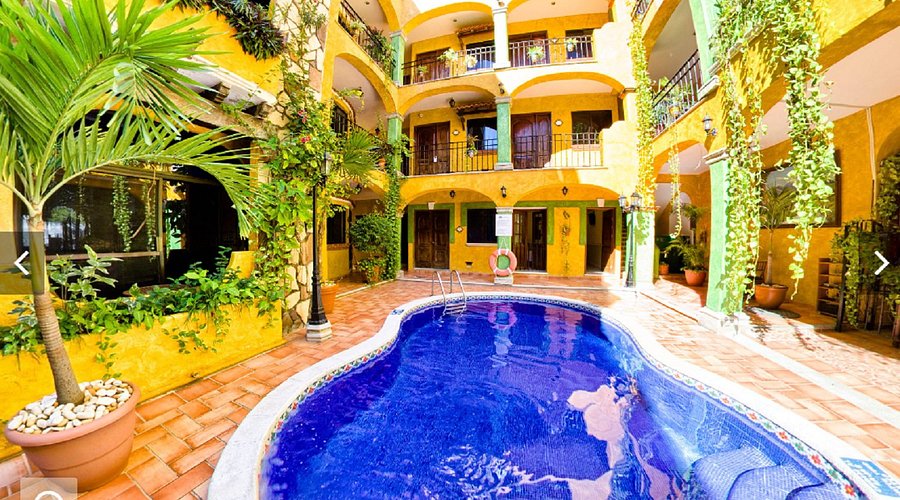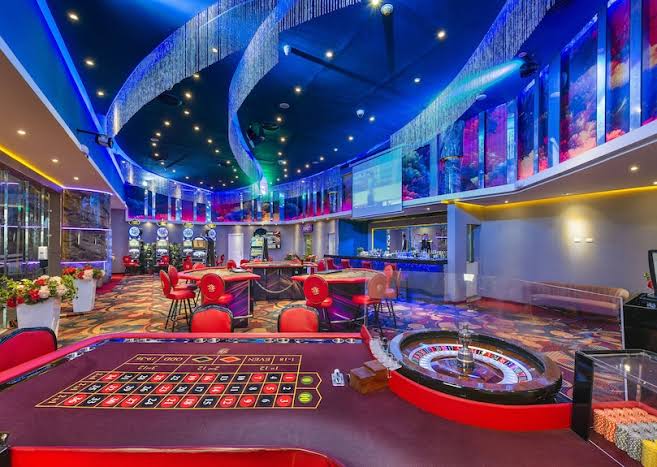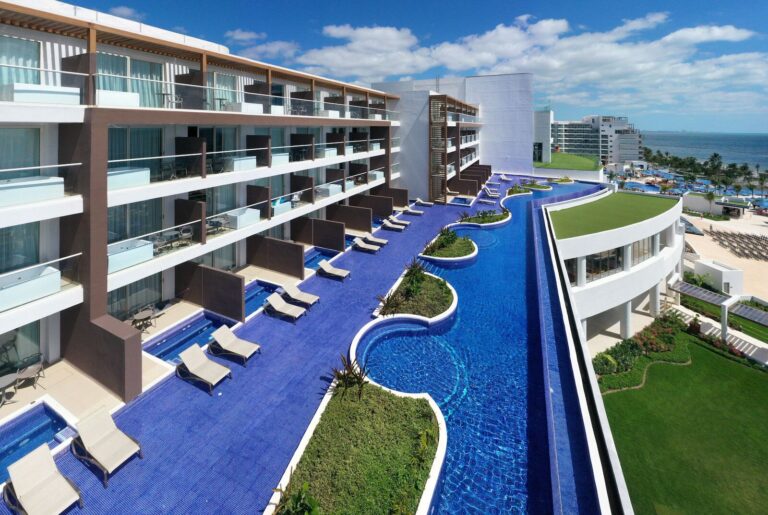Hotel Hacienda del Caribe: A Hidden Gem on the Riviera Maya
Hotel Hacienda del Caribe: A Hidden Gem on the Riviera Maya
The Arrival
I arrived at Hotel Hacienda del Caribe just after sunset, when the golden light melts into the sea and the shadows of the jungle begin to stir. The small, cobblestone road leading to the hotel’s entrance felt like a passage through time. Lanterns flickered under archways of hand-chiseled stone, and the faint echo of a guitar floated through the air like a warm invitation.
The reception was a colonial-era desk set beneath a stained-glass dome, manned by a smiling gentleman named Benito, who welcomed me like an old friend. “Señorita, welcome home,” he said, handing me a cool cloth scented with hibiscus and lime.
From that moment, I knew this was no ordinary stay. Hotel Hacienda del Caribe was a portal—a place where stories lived, and where time bowed to tradition.
A Legacy in Stone and Spirit
Built in 1894 by the eccentric Spanish land baron Don Miguel Ordóñez, the hacienda was originally a private retreat for artists, writers, and revolutionaries. Local legend says Frida Kahlo once painted beneath its arched corridors, and that Diego Rivera’s ghost still lingers in room 212, leaving behind the scent of tobacco and linseed oil.
Restored in 1998 and opened as a boutique hotel, the hacienda preserves its original structure: 36 rooms circling a central courtyard alive with birdsong and the sound of water trickling from a stone fountain carved with Mayan glyphs. Every tile, every lantern, every door tells a story. Some, like the hand-painted talavera tiles imported from Puebla, shimmer with centuries of craft. Others, like the weather-worn wooden doors engraved with Nahuatl poetry, whisper secrets only the most attentive guests will hear.
Rooms with a Soul
My room, El Mariposa, was located on the second floor, overlooking the courtyard. Inside, the ceilings soared overhead, painted with motifs of corn, jaguars, and stars. The bed was a carved mahogany four-poster wrapped in gauzy linen, and the air carried the scent of lavender and cedarwood from a small clay diffuser on the nightstand.
No TVs. No digital distractions. Just a heavy journal left by the last guest, filled with sketches, pressed petals, and one entry that read:
“Found myself again beneath the orange tree today. I think I’ll stay one more night.”
I left a note too, before I departed. It seemed the right thing to do.
Cuisine: Memory on a Plate
Dining at Hotel Hacienda del Caribe is not merely about nourishment—it’s a cultural journey. The restaurant, Ceniza y Cacao, is helmed by Chef Yaretzi Gómez, a culinary prodigy from Oaxaca who reimagines ancestral recipes with reverence and innovation.
I dined on cochinita pibil cooked underground in a pib, served with handmade blue corn tortillas and a side of pickled onions that danced on the tongue. One evening, I tried the chile en nogada, made with locally grown walnuts and fresh pomegranate seeds, each bite a harmony of history and flavor.
Breakfasts were quiet rituals: coffee brewed with cinnamon, papaya with lime, and freshly baked conchas served with guava marmalade made by Doña Flor, the head baker who has worked at the hacienda for 27 years.
Food here doesn’t just taste good—it tells you where you are.
The Jungle Spa
Set deeper in the grounds, past a vine-covered stone archway, lies Ixchel’s Garden, a holistic spa that blends Mayan healing traditions with modern techniques. My treatment began with a temazcal—a traditional steam bath led by a healer named Tonatiuh, whose chants echoed like ancient prayers.
Later, I experienced the Xoco-Chak ritual, where raw cacao is used to exfoliate and energize the skin, followed by a massage using obsidian stones believed to absorb negative energy.
Whether or not I believe in energy transfer, I emerged lighter—mentally and physically. My skin glowed, my shoulders unknotted, and I felt somehow reconnected to the earth beneath me.
The Staff: Guardians of Tradition
Every staff member at Hotel Hacienda del Caribe seems to carry a quiet pride. They are not just employees—they are stewards of a legacy. From the gardener who can tell you which tree is oldest (a ceiba tree planted by Don Miguel himself) to the housekeeper who leaves handwritten notes in calligraphy on your pillow, the level of care borders on reverent.
Benito, the concierge, offered to guide me to a cenote known only to locals. “It’s sacred,” he said. “But I think she would welcome you.” We rode there by bike at sunrise, and for an hour, I floated in aquamarine silence, sunlight dancing on the limestone walls around me.
I asked who “she” was.
“La abuela del agua,” he said. “The grandmother spirit of the cenote.”
Evenings at the Hacienda
Nights at Hotel Hacienda del Caribe are magical in their simplicity. There’s no bar with booming music, no parties or flashing lights—just a candlelit terrace, a glass of smoky mezcal, and a sky so clear you can trace the constellations as the Mayans once did.
Sometimes, local musicians perform by the fountain—harpists, violinists, or singers who learned their songs from grandmothers and cantinas. One night, an elderly man played a song on the jarana that made a young couple cry. He smiled and said, “That one’s from Veracruz. It’s older than all of us.”
And in that moment, the present felt like it had folded into the past.
Day Trips and Mystical Adventures
While the hotel itself is a destination, its location allows for exploration of the Yucatán’s deeper mysteries. Staff can arrange private tours to nearby ruins like Ek’ Balam, Coba, or the hidden temples of Muyil, often without the crowds that swarm Tulum or Chichen Itza.
For those seeking coastal adventures, a local fisherman named Ricardo offers boat rides through mangrove estuaries to see flamingos, crocodiles, and the occasional dolphin.
And for the spiritually curious, Hotel Hacienda del Caribe offers workshops in cacao ceremony, Mayan astrology, and traditional embroidery—all taught by elders and artisans from nearby villages. These aren’t performances—they’re invitations.
Sustainability Rooted in Culture
Unlike many resorts, Hacienda del Caribe isn’t content with surface-level sustainability. The hotel operates with a deep respect for the land and its people. Rainwater collection, solar power, and zero-plastic policies are just the beginning.
Much of the food comes from the hotel’s permaculture garden or nearby cooperatives. Staff are paid fair wages and many are shareholders in the business. “Our success is shared,” the manager told me. “Just like our stories.”
And the hotel partners with indigenous-run ecological projects, contributing to reforestation efforts and the preservation of local languages like Yucatec Maya.
Departure, or Something Like It
When it came time to leave, I found myself lingering in the courtyard, under the shade of the orange tree, just as the journal entry had said. A butterfly—mariposa azul—landed on my arm, as if offering me a goodbye blessing.
Benito handed me a small envelope. “From the guest before you,” he said.
Inside was a single pressed petal and a note:
“Some places change you. This one reminded me who I was.”
As the taxi pulled away, I realized I hadn’t just stayed at a hotel. I had entered a story I didn’t know I was part of—and now I was leaving it, with ink still on my hands.
Final Thoughts
Hotel Hacienda del Caribe is not for everyone. It’s not a place to be seen, or to scroll, or to escape into luxury detached from place. It’s a place to slow down. To listen. To feel.
It is where you come when you’re ready to remember something—not just about Mexico, but about yourself.
And if you do stay, leave a note in the journal. Someone, someday, will find it—and know they’re not alone in their rediscovery







